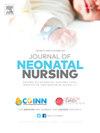Paracetamol versus ibuprofen as first-line treatment for patent ductus arteriosus: An updated systematic review and meta-analysis of randomized controlled trials
Q2 Nursing
引用次数: 0
Abstract
After over four decades of clinical investigation, the management of patent ductus arteriosus (PDA) in premature neonates remains highly contradictious, with no consensus on the optimal timing and approach for intervention. A systematic review and meta-analysis of randomized controlled trials were conducted using databases including Google Scholar, PubMed, and Scopus. The primary outcomes evaluated included closure rates, complications, mortality, and duration of hospitalization. A total of ten studies involve 986 premature infants diagnosed with PDA were analyzed. The study findings indicated comparable primary closure rates between paracetamol and ibuprofen treatments (RR, 1.01; 95 % CI, 0.94–1.08; P = 0.78), although fewer complications were observed in the paracetamol-treated group (RR, 0.85; 95 % CI, 0.71–1.01; P = 0.07). Moreover, the duration of hospital stay was shorter in infants treated with paracetamol (SMD, −0.24; 95 % CI, −0.47,-0.00; P = 0.05), while mortality rates did not significantly differ between groups (RR, 0.72; 95 % CI, 0.48–1.08; P = 0.11). These findings suggest that paracetamol may be an effective initial therapeutic option for managing PDA in premature infants. However, further trials are necessary to establish optimal dosing regimens, treatment durations, and potential long-term effects associated with this approach.
对乙酰氨基酚与布洛芬作为动脉导管未闭的一线治疗:随机对照试验的最新系统评价和荟萃分析
经过四十多年的临床研究,早产儿动脉导管未闭(PDA)的处理仍然高度矛盾,对最佳干预时间和方法没有共识。使用谷歌Scholar、PubMed和Scopus等数据库对随机对照试验进行系统评价和荟萃分析。评估的主要结局包括闭合率、并发症、死亡率和住院时间。我们分析了10项涉及986名确诊为PDA的早产儿的研究。研究结果表明,扑热息痛和布洛芬治疗的初级闭合率相当(RR, 1.01;95% ci, 0.94-1.08;P = 0.78),但扑热息痛治疗组的并发症较少(RR, 0.85;95% ci, 0.71-1.01;p = 0.07)。此外,使用扑热息痛治疗的婴儿住院时间更短(SMD, - 0.24;95% ci,- 0.47,-0.00;P = 0.05),而组间死亡率无显著差异(RR, 0.72;95% ci, 0.48-1.08;p = 0.11)。这些发现提示扑热息痛可能是处理早产儿PDA的有效初始治疗选择。然而,需要进一步的试验来确定最佳的给药方案、治疗持续时间和与该方法相关的潜在长期影响。
本文章由计算机程序翻译,如有差异,请以英文原文为准。
求助全文
约1分钟内获得全文
求助全文
来源期刊

Journal of Neonatal Nursing
Nursing-Pediatrics
CiteScore
2.00
自引率
0.00%
发文量
143
期刊介绍:
Aims & Scope: This is the practical, bimonthly, research-based journal for all professionals concerned with the care of neonates and their families, both in hospital and the community. It aims to support the development of the essential practice, management, education and health promotion skills required by these professionals. The JNN will provide a forum for the exchange of ideas and information between the range of professionals working in this field; promote cooperation between these professionals; facilitate partnership care with families; provide information and informed opinion; promote innovation and change in the care of neonates and their families; and provide an education resource for this important rapidly developing field.
 求助内容:
求助内容: 应助结果提醒方式:
应助结果提醒方式:


